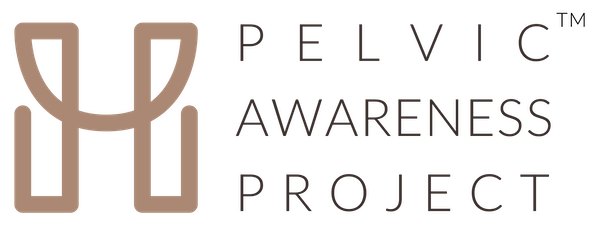A diagnosis of bladder prolapse is just the beginning.
At least you know what has been causing the various symptoms that have been bothering you. But now you have a lot of questions:
- What is bladder prolapse?
- Why do I have bladder prolapse?
- What can I do about bladder prolapse?
- What are bladder prolapse treatments?
We’re here to help with all you need to know about this condition, including a range of bladder prolapse treatments.
What Is Bladder Prolapse?
Bladder prolapse, also known as a fallen bladder, or cystocele, is a form of pelvic organ prolapse. A prolapse occurs when the muscles and ligaments known as the pelvic floor are weakened or stretched.
Since these muscles hold your pelvic organs in place, a weakening of the muscles can cause an organ to fall out of place—known as a pelvic organ prolapse. When the bladder falls out of place and sags into your vagina, it’s known as bladder prolapse.
Common symptoms include feeling or seeing something bulging through your vaginal opening, or experiencing fullness, heaviness or pain in your pelvic area. You may need to go to the bathroom more than usual, and have trouble emptying your bladder when you do. You may have trouble inserting tampons, or suffer from frequent urinary tract infections.1
How Severe is Bladder Prolapse?
There are three different grades or severities of bladder prolapse, depending on how far the bladder falls into the vagina.
Here are the three types of cystoceles:1
- Mild or Grade 1: When the bladder drops only a short way into the vagina.
- Moderate or Grade 2: When your bladder drops to the opening or slightly outside of your vagina.
- Severe or Grade 3: When your bladder bulges a lot past the opening of your vagina.
The impact of a bladder prolapse also depends on the severity. Grade 1 or mild prolapse may only cause discomfort or cause you to leak pee accidentally, known as urinary incontinence. Grade 3 or severe prolapse could be as serious as preventing you from peeing, which could lead to infection or kidney damage.1
Why Do I Have Bladder Prolapse?
Your pelvic floor is a vital part of your anatomy. When it’s strong, it holds your bladder and other pelvic organs in place, forming a hammock of muscles and tissue.
The main cause of prolapse is a weakening of this supportive “hammock.” It may become stressed following a vaginal birth, for instance. Menopause causes estrogen levels to drop, which can weaken the muscles. The natural process of aging also weakens the muscles.2
Other factors that can lead to weakened muscles and eventually prolapse include:2
- heavy lifting
- chronic coughing
- constipation or frequent straining to pass stool
- obesity
- prior pelvic surgery
If you have a prolapse, you’re not alone. It’s estimated that up to 50% of women have some grade of prolapse.1
What Are Bladder Prolapse Treatments?
So you’ve received your diagnosis and you understand the cause of prolapse. What are the bladder prolapse treatments you may receive?
It depends on the severity of your prolapse, as well as the severity of your symptoms and how much they bother you. Here are the most common bladder prolapse treatments.
Medication
If your prolapse is due to low estrogen levels caused by menopause, then estrogen treatment may be an option.3
A Pessary
A pessary is a type of vaginal insert that supports prolapsed pelvic organs. A pessary is a silicone device that is put into the vagina—an option that you can learn to use yourself. They come in various shapes and sizes, and your healthcare provider will advise you on the best one. Then your doctor will provide advice on using a pessary, including how to insert, remove and clean the pessary.3
Surgery
In serious cases, or if symptoms are severe enough to bother you, then surgery may be suggested by your doctor.
A reconstructive surgery known as colporrhaphy is done through an incision in the wall of the vagina. A surgeon will push the bladder up and secure the connective tissue between the bladder and the vagina to keep the bladder in place. If you’re suffering from urinary incontinence, the surgeon might suggest a bladder neck suspension or sling to support your urethra.3
If you undergo this type of surgery, you can typically go home the same day of surgery, and you’ll recover completely in a few months.1
Another more drastic option for surgery is for women who don’t plan on having sexual intercourse again. In this instance, surgery can be performed that will sew the vagina shut and shorten it so there won’t be any bulges.1
If you have more than one prolapse—if more than one organ other than your bladder has fallen—then your doctor will likely suggest other surgical options.
Non-Invasive Bladder Prolapse Treatments
Not all prolapses are serious enough to require medication, or surgery. And even if you undergo prolapse surgery, it only repairs the tissue bulge. Surgery doesn’t repair the weakened tissues of the pelvic floor, so you could suffer from another prolapse.
That’s when exercises to strengthen the pelvic floor can be your best form of treatment. It can also be done in conjunction with other treatments, or can even serve as a form of prevention for prolapse and other pelvic health conditions.
What are pelvic floor exercises? Also known as Kegels, these important exercises can be done by women of any age, and those suffering from a problem like prolapse, or those with a healthy pelvic floor.
Pelvic Floor Muscles Exercises
Adding pelvic floor exercises to your daily routine has been proven by research to prevent your pelvic muscles from getting weak, which in turn can give you better control over your bladder and bowels, and prevent serious conditions like urinary incontinence and prolapse.
Named for Dr. Kegel, who first described this type of strengthening, pelvic exercises involve tightening and then releasing your pelvic muscles. Research done by Dr. Kegel showed that his exercises could prevent pelvic health conditions like bladder prolapse.4
Here are some other benefits of doing Kegels to build a “fit” pelvic floor:5
- longer time between trips to the bathroom
- fewer urine or bowel leaks
- faster recovery from childbirth
- possibly more intense orgasms
How Do I Do Kegels?
How do you properly perform Kegels? Imagine you’re trying to stop the flow of pee, or you want to prevent gas from escaping. Those are the muscles you’re targeting in these exercises.
Perform one “Kegel” by tightening or contracting the muscles, holding for five seconds, and then relaxing for five seconds. Work up to holding the contractions for 10 seconds at a time.
You should aim for at least three sets of 10 repetitions each day, and perform them in three different positions—while sitting, while standing, and while lying down. Using all three positions makes the muscles strongest.6
The Proper Way to Do Kegels
Kegels are only effective if you’re doing them properly, by contracting and relaxing the correct muscles. As a result, it’s worth consulting with your healthcare provider to be sure you are targeting the right area. If you’re recovering from surgery for your bladder prolapse, be sure it’s safe for you to begin exercising your pelvic floor.
You can also seek the advice of a pelvic floor physical therapist who can guide you in the proper technique for Kegels. A therapist may suggest biofeedback to make sure you are exercising the correct muscles. There are other other tools available, such as Kegel weights, or other over-the-counter devices that can support your exercise.
One way to know you’re performing Kegels properly, and to complete the proper number of repetitions, is by using a clinically proven tool such as the Gynesis pelvic floor trainer shorts.
These are pelvic floor trainers that deliver targeted muscle stimulation. Using an exclusive Multipath Technology, electrical stimulation reaches multiple areas of your pelvic floor. All the critical muscles of the pelvis are targeted, helping to retrain and rebuild your pelvic floor.
The Gynesis shorts are designed to be comfortable for everyday use. These shorts allow you to perform 180 precise Kegels in each 30-minute session—so you know you’re doing the exercises properly and completing the right number of exercises.
Kegels are an excellent form of treatment and prevention, strengthening your important pelvic muscles.
See A Doctor
If you have bladder prolapse, your doctor is the best person to determine the right treatment path. Use our Physician Finder to find a doctor near you with expertise in women’s health who can provide advice on prolapse and other pelvic health concerns. A healthcare provider can also provide guidance on a healthy pelvic floor, including exercises to prevent and treat conditions like prolapse.
















